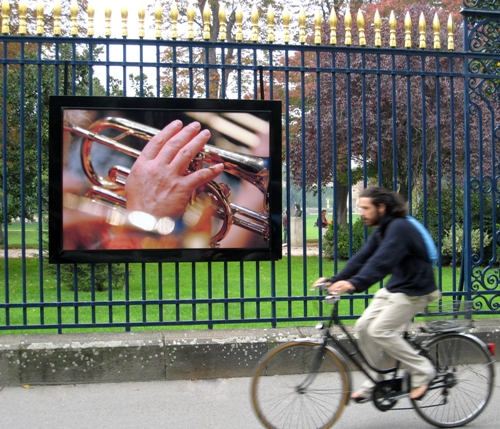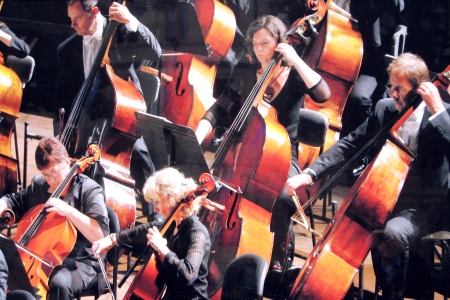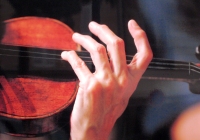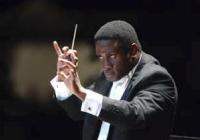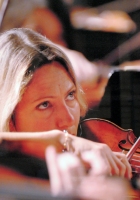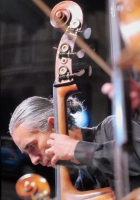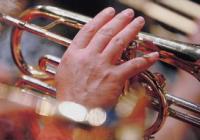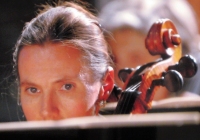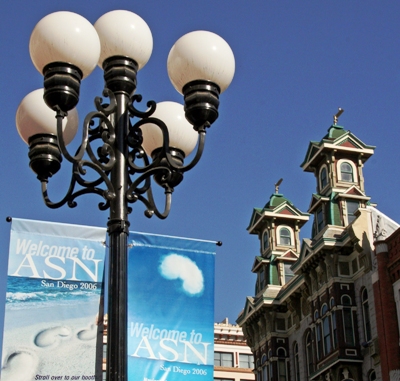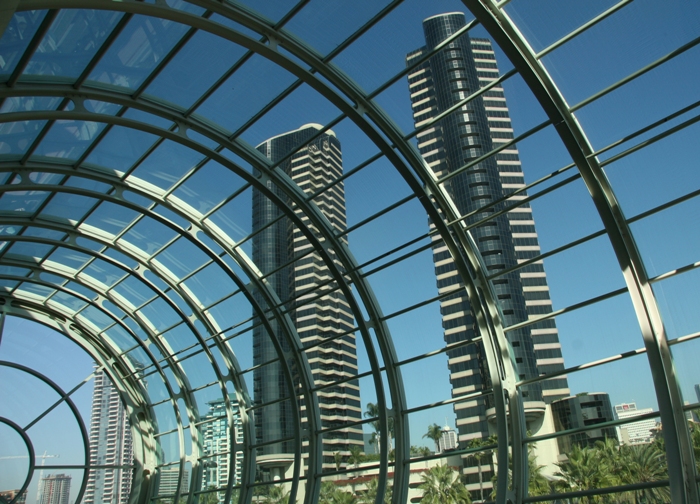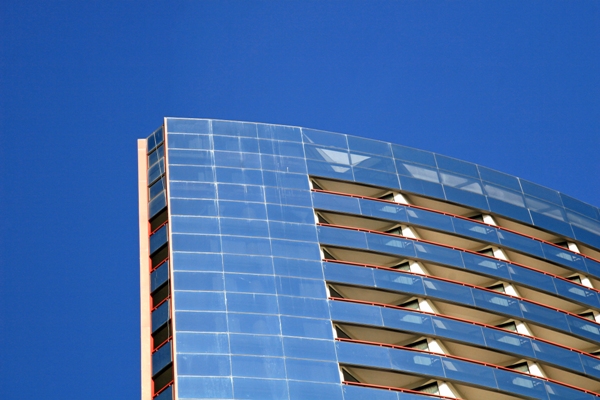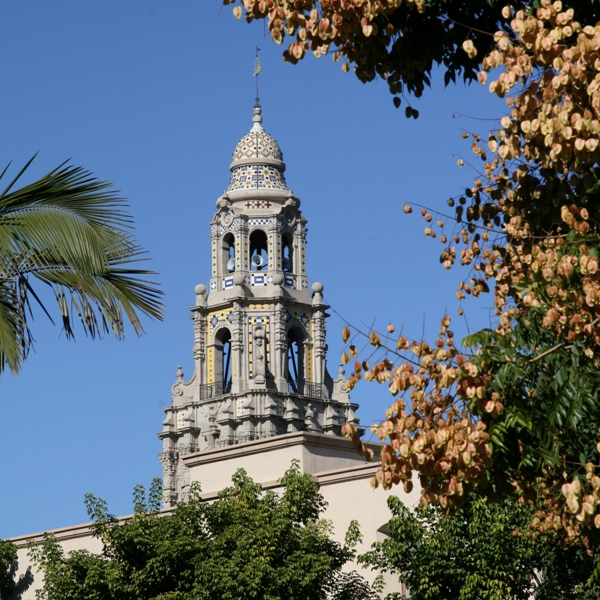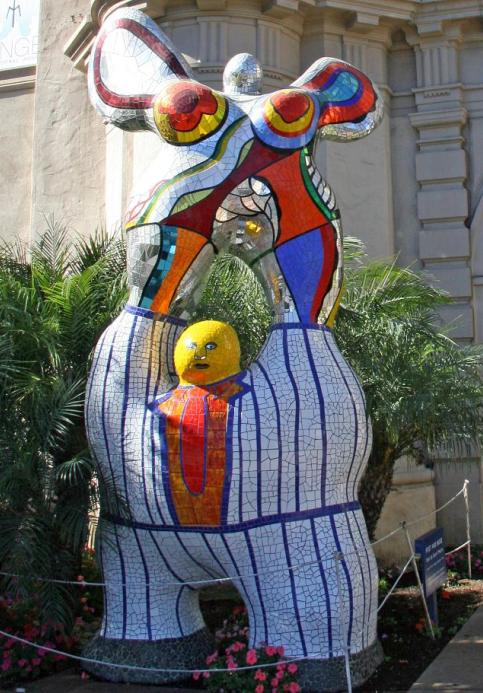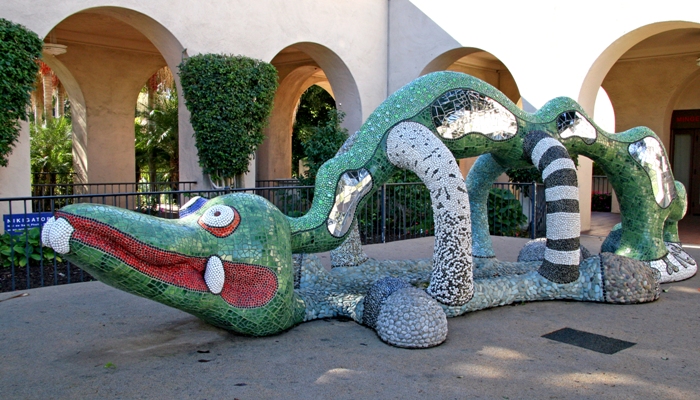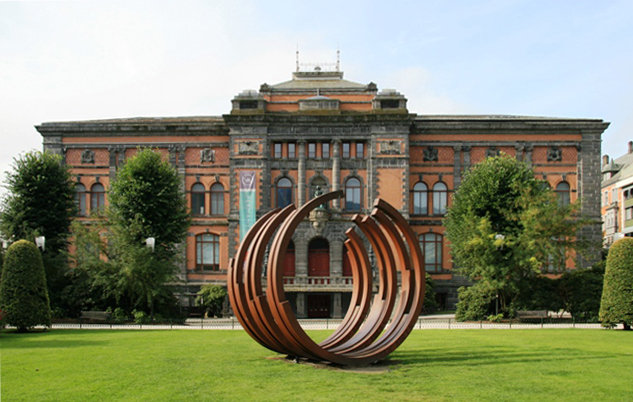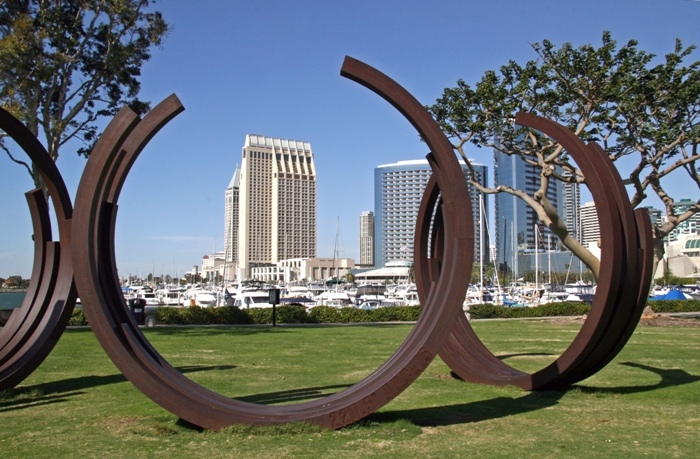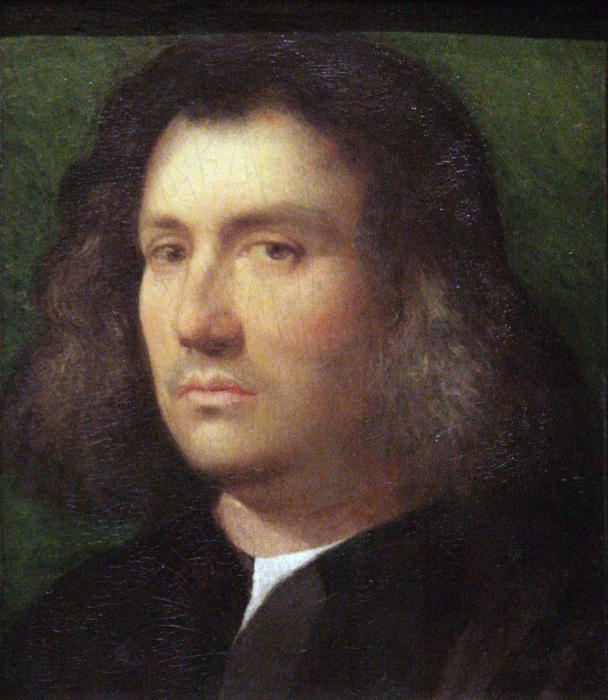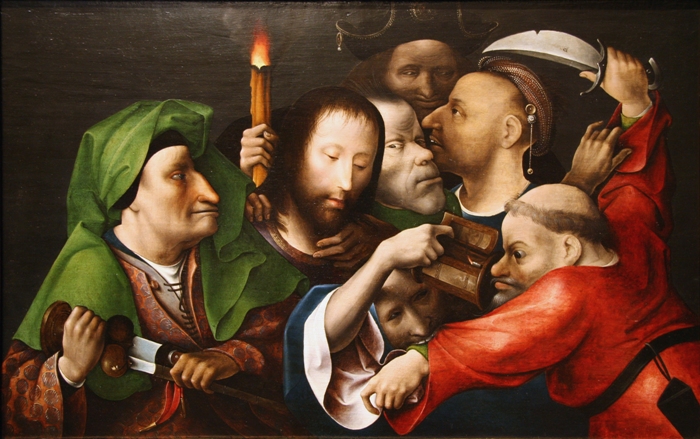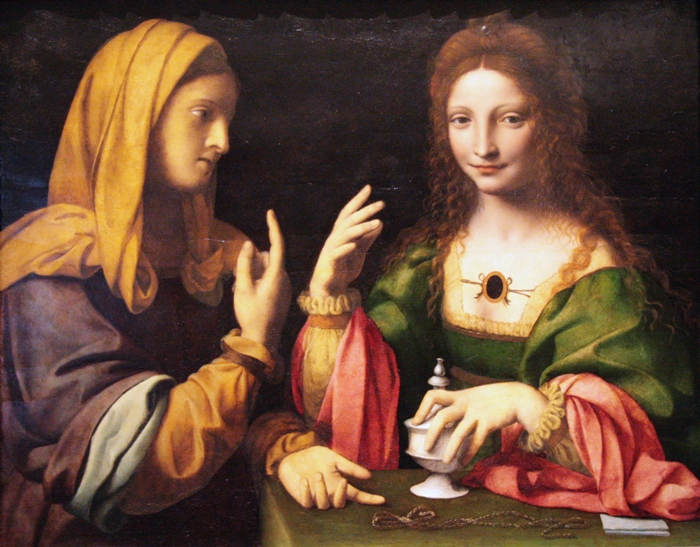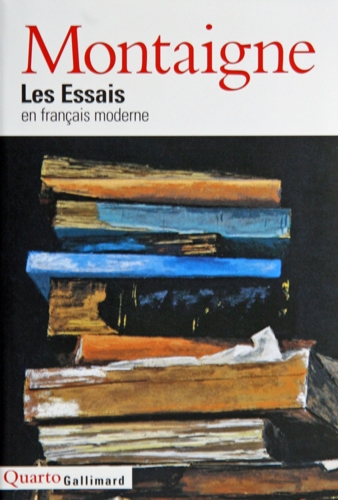The twin-towered Louis Bank of Commerce
|
The annual conference of the ASN,
the American Society of Nephrology, was held in San Diego two weeks ago.
There was a lot of interesting stuff for a nephrologist there. No topic for this blog though. Rather than blogging about work, I will rather show photos taken while I strolled around in the city's streets and museums, either on the day before the Convention began this year, either during a previous stay in 2006, when another ASN Renal Week was held there.
Architecture. There are beautiful buildings in San Diego. In Gaslamp quarter especially, many houses are remarkable. The twin-towered building above is located at 837 Fifth Avenue. Its top floor used to be a house of prostitution and the first floor an Oyster Bar where
Wyatt Earp operated for a time.
From inside the Convention Centre
|
The Convention Centre itself is beautiful work, and many skyscrapers are beautiful as well. In Balboa Park on the contrary, buildings are essentially 20th century pitiful attempts to reproduce Spanish mostly, Tuscan sometimes, buildings of the baroque style... with stucco. The California Tower of the Museum of Man is nice though.
Sculpture. French sculptor
Niki de Saint-Phalle lived in San Diego from 1994 to 2002. She had solvent-related emphysema, and enjoyed the paradise weather of the area. Yet it did not prevent her from dying of pulmonary failure.
Two sculptures by her are exhibited in Balboa Park, in front of the
Mingei International Museum:
Poet/Muse and
Nikigator. Children love the latter especially, some kind of dragon they are often brave enough to sit astride.
Another French Sculptor,
Bernar Venet, was much in evidence in several places in the city, although temporarily only. You know what? I believe this guy is following me: everywhere I go, I see his iron arcs.
When I had vacation in Norway in 2006, they were exhibited in
Bergen. When I attended the annual conference of the French Society of Nephrology in
Bordeaux two years ago, they were exhibited there. And at present they are exhibited in
San Diego too!
Sorry Bernar, but you'll have to resign yourself: I will never buy any, my kitchen is too small.
Painting. Close to the Mingei Museum in Balboa Park, the
San Diego Museum of Art displayed artworks by Picasso and Miró especially, in a temporary exhibition. I liked a couple, essentially a drawing by Picasso of a Minotaur stroking a sleeping woman. There was an exhibition of Calder Jewelry too. I don't like Calder's mobiles that much. I didn't like his massive earrings, tiaras and necklace either.
Anyway, the main reason why I went to Balboa park was the Museum of Art permanent exhibition, with several Renaissance paintings I had been longing for three years to see again. There are paintings by
Rogier Van Der Weyden,
Giotto, Titian, and others, Flemish and Italian. Here come a few words about my three favourite.
Giorgione — Portrait of a Man
Oil on panel, 1506
|
Portrait of a Man, by Giorgione.
This painting is one of the greatest Renaissance portraits in my opinion. The composition is closely cropped around the head of the sitter. The setting or props often used at the time to animate portraits are absent, yet the man's turning gaze and ambiguous expression make the portrait wholly engaging and alive.
Giorgione was friend of
Titian (who finished his
Sleeping Venus after his early death, a painting that foreshadowed my beloved Venus of Urbino — see a
previous blog). He was unprecedented in his ability to describe warm flesh and soft hair. Quoting
Georgio Vasari, Giorgione's
'modern manner' sought to paint
'living and natural things', several years before
Titian, Tintoretto and Veronese arrived on the Italian scene.
Hieronymus Bosch — Arrest of Christ
Oil on panel, ca. 1516
|
The Arrest of Christ, by H. Bosch.
The painting depicts Jesus's arrest outside of
Gethsemane. To the right, Peter raises a sword in defence of Jesus. He has just cut the ear from the High Priest's servant, who bites his arm and thrusts a lantern in his face. The grotesque figures of his tormenters contrast with the serene image of Jesus himself.
I love the way Bosch, in this painting, distorts the characters into something like caricature. Can you believe this was painted 500 years ago?
B. Luini — The Conversion of the Magdalene
Oil on panel, ca. 1520
|
The Conversion of the Magdalene,
by Bernardino Luini. This is the moment when Mary Magdalene, the attractive and fashionable woman on the right, decides to put aside her finery (like the necklace on the table) and old life, and follow Jesus, like her sister Martha (on the left) previously. She holds an unguent jar, a symbol of her act of anointing Jesus's feet.
Bernardino Luini was among Leonardo da Vinci's closest followers in Milan. One can find a lot of Leonardo typical features in this painting: the characteristic figure types especially, with the mysterious, seductive smile of Magdalene, and the distinctive gesturing hands that animate the narrative.
So... after one day in the streets and museums of the city, I had my eyes and camera full of pictures. It was just time to go to the Convention Centre and attend the Conference.
